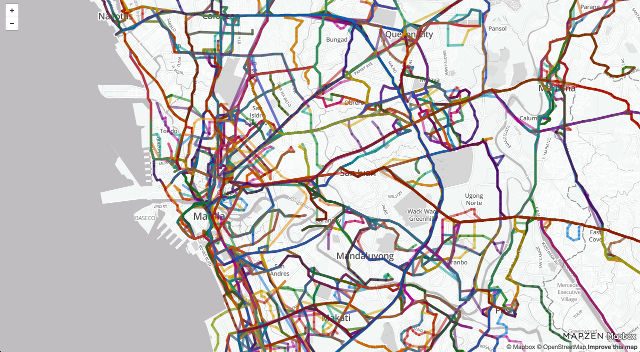SUMMARY
This is AI generated summarization, which may have errors. For context, always refer to the full article.

NEW YORK, USA – Imagine if you could plan your own city’s transit line. How would you design your perfect bus or jeepney system or routes from, say, Pasig to Quiapo or, if that’s already working perfectly fine, what about planning transit lines to and from remote villages?
That means you wouldn’t have to be a transit or urban planner, although it’d be a tremendous help if you were one. A simple new tool called Transitmix.net can do this for you now.
Presented at the Code for America Summit last September, Transitmix is a web-based sketching tool that can help you draw routes more efficiently. It started as a hackathon project by Sam Hashemi, Tiffany Chu, and three other fellows of Code for America who suddenly found themselves thrust into the world of traffic planners studying traffic analysis zones, automatic vehicle locations and automatic passenger counts.
The tool allows users to share these maps for others to view and “remix” by adding, changing or deleting routes, demonstrating how the bus network costs vary as existing lines change in route, frequency, and service time. It also calculates a project cost if you so much as move a mapped route to another route.
It’s a big leap from the traditional way of mapping routes – whiteboard or paper, then Google Earth and Excel. Planners used to sketch their ideas by hand on a map, retrace them into Google Earth for distance measurements, and copy the numbers into Excel to get a cost estimate. Sketches normally go to ArcGIS, a geographic information system for working with maps and geographic information.
Since its beta launch in June, Transitmix has proved to be useful for many planners. It has generated more than 125,000 bus lines and 40,000 new transit maps in more than 3,600 cities all over the world, all powered by open, standardized data. Mapzen provides the back-end development for Transitmix.
Watch this demonstration video of Transitmix:
This includes the Philippines which has generated about 1,700 routes. You can find this on the site’s “Nearby Lines” button in the bottom left of Transitmix’s site.
“These are all informal transit lines that have slowly been mapped recently, but it’s only the start,” said Hashemi.
“People in Manila can help complete this by drawing their own routes and sharing their additions on the internet. The more people do this, the more we can build a realistic picture of Manila,” he added.
Like any congested city, Manila presents several challenges.
Mass transport is ubiquitous. In every street corner, there’s a tricycle or pedicab or taxicabs or if in the main streets, jeepneys and in the highways, buses–with no exact pre-set schedules – or none followed at least, on top of many unscheduled stops, especially on jeepneys where can anyone say “para” (stop) and jeepney drivers can just stop anytime.
How would you craft a solution for this?
“This is a pretty complex problem to solve, but I think open data is the first solution. Once we know where the buses go and how often they come, we can start to ask questions around how we can better optimize the whole system” Hashemi said.
How does it work in terms of mapping flooded areas?
“We’ve seen Transitmix used to reroute buses quickly when disasters (or construction) hits. I could imagine it being used to do the same in cases of flooding, quickly pull in an existing route, modify it based on flooding, and share it with drivers and passengers,”
Hashemi thinks it’s only the beginning for the tool. The more people use it, the more it can incorporate more detailed transit networks – rail included. – Rappler.com
The author covers the New York tech scene at reimaginetech.com. Follow @dennisclemente
Add a comment
How does this make you feel?
There are no comments yet. Add your comment to start the conversation.